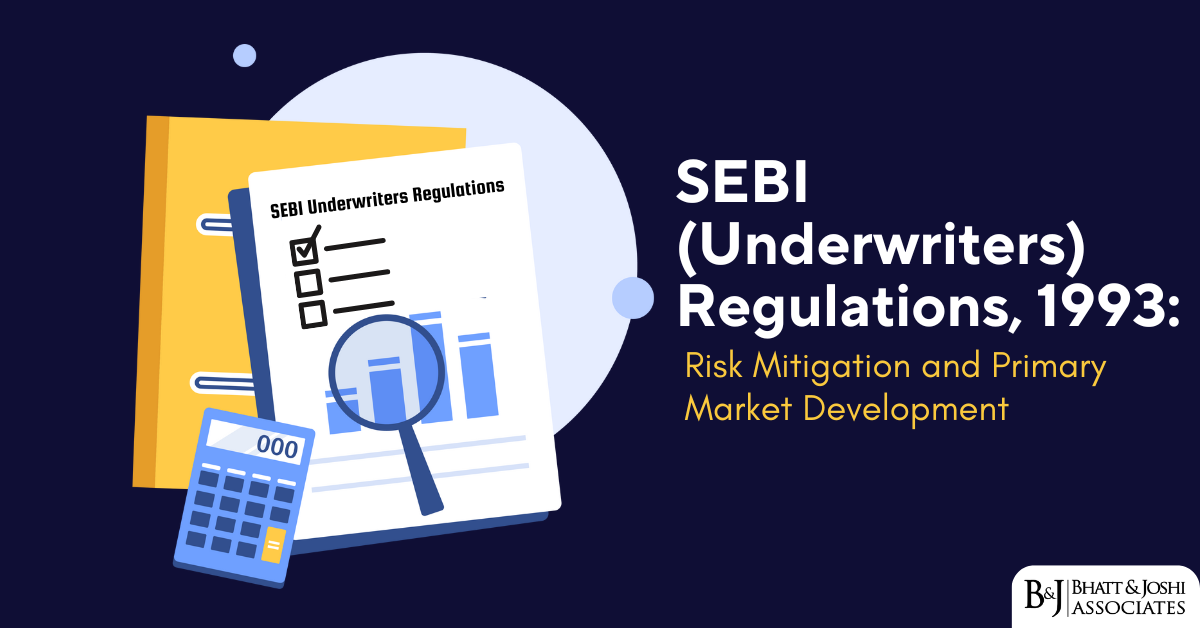Introduction
The Securities and Exchange Board of India (SEBI) Stock Brokers Regulations, 1992 represent one of the earliest and most foundational regulatory frameworks established by SEBI after its statutory empowerment in 1992. Enacted during a transformative period in India’s financial history following the liberalization initiatives of 1991, these regulations established a comprehensive framework for the registration and supervision of stock brokers, sub-brokers, and clearing members—entities that serve as critical intermediaries in securities markets. The regulations emerged at a time when India’s markets were transitioning from an informal, relationship-based trading environment with limited regulatory oversight to a more formalized, transparent ecosystem designed to protect investor interests and ensure market integrity.
Over the three decades since their promulgation, these regulations have undergone numerous amendments to address emerging market developments, technological innovations, and evolving international standards. Despite these changes, the core principles established in 1992—registration requirements, capital adequacy standards, conduct expectations, and enforcement mechanisms—have remained the bedrock of broker regulation in India. Their enduring influence reflects the soundness of their foundational approach to intermediary regulation while demonstrating sufficient flexibility to accommodate market evolution.
This article examines the key provisions of the regulations, landmark cases that have shaped their interpretation, and their impact on the development of India’s brokerage industry and broader securities markets.
Historical Context and Regulatory Background of SEBI Stock Brokers Regulations, 1992
Prior to the establishment of SEBI and the promulgation of the Stock Brokers Regulations, India’s securities markets operated with limited formal regulation. Stock exchanges functioned as self-governing bodies with substantial autonomy in setting membership criteria and trading rules. Brokers operated primarily under exchange by-laws and the Securities Contracts (Regulation) Act, 1956, with limited standardization across markets and inconsistent enforcement of rules.
This regulatory landscape proved inadequate as market activities expanded in volume and complexity during the 1980s. The Harshad Mehta securities scandal of 1992, which exposed significant vulnerabilities in market infrastructure and oversight, served as a catalyst for regulatory reform. The scandal revealed how the absence of stringent broker regulation could enable market manipulation, misappropriation of client funds, and systemic risk accumulation.
Against this backdrop, the newly empowered SEBI promulgated the Stock Brokers Regulations under Section 30 of the SEBI Act, 1992. These regulations represented a paradigm shift from exchange-centric self-regulation to a comprehensive statutory framework with SEBI as the primary regulatory authority. This shift aligned with global trends toward stronger statutory regulation of market intermediaries following various market failures internationally.
The SEBI (Stock Brokers) Regulations, 1992 established, for the first time in India, uniform standards for broker registration, capitalization, operations, and conduct across all securities exchanges. This standardization was crucial for ensuring consistent investor protection regardless of the specific exchange on which trading occurred.
Registration Requirements and Categorization Under SEBI Stock Brokers Regulations 3–6
The cornerstone of the regulatory framework under the SEBI (Stock Brokers) Regulations, 1992 is the mandatory registration requirement established by Regulation 3, which states unequivocally: “No person shall act as a stock broker unless he has obtained a certificate of registration from the Board under these regulations.” This provision effectively ended the era when broker status was determined solely by exchange membership, establishing SEBI as the ultimate gatekeeper for market access.
The application process, detailed in Regulation 3 read with Form A of the First Schedule, requires submission of comprehensive information about the applicant’s financial resources, business history, organizational structure, and proposed operational arrangements. SEBI’s evaluation criteria, specified in Regulation 5, focus on the applicant’s financial soundness, professional competence, and market reputation.
A particularly important provision is Regulation 5(e), which requires SEBI to consider “whether the applicant has the necessary infrastructure, including adequate office space, equipment, and manpower to effectively discharge his activities.” This infrastructure requirement represented a significant shift from earlier periods when brokers could operate with minimal operational infrastructure.
The regulations also establish different registration categories aligned with functional roles. Regulation 6 specifies that registration may be granted for roles including trading member, clearing member, self-clearing member, or trading-cum-clearing member. This categorization enables tailored regulatory requirements based on the specific functions performed and risks assumed by different intermediaries.
The registration framework serves as a crucial qualitative filter, ensuring that only entities meeting minimum standards of financial strength, operational capability, and professional integrity can serve as intermediaries in securities markets. This gatekeeping function has been instrumental in raising professional standards across the brokerage industry.
Capital Adequacy Norms and Financial Safeguards Under SEBI Regulation 9
Regulation 9 under the SEBI (Stock Brokers) Regulations, 1992, establishes capital adequacy requirements for brokers, creating financial buffers against operational risks and potential defaults. The regulation states that “a stock broker shall have at all times a net worth which shall not be less than the net worth specified in these regulations or the net worth specified by the clearing corporation, whichever is higher.”
The specific capital requirements vary based on the segment in which the broker operates and the functions performed. For cash market operations, brokers must maintain base minimum capital ranging from ₹5 lakhs to ₹1 crore depending on exchange category. For derivatives segment participation, higher capital requirements apply, reflecting the increased risks associated with leveraged trading.
A particularly important aspect of the capital framework is the concept of “base minimum capital” versus “additional capital based on exposures.” The base requirements establish a minimum floor regardless of trading volume, while additional requirements scale with actual risk exposure, creating a risk-sensitive capital framework.
The regulations also established “membership deposit” requirements to be maintained with exchanges, creating an additional layer of financial security. These deposits serve as first-line financial resources in case of broker defaults, protecting both counterparties and the clearing system.
The capital adequacy framework has played a crucial role in ensuring broker financial resilience during market stress periods. During episodes of extreme market volatility, such as the 2008 global financial crisis and the 2020 COVID-19 market disruptions, this framework helped prevent cascading broker failures that might have amplified market instability.
General Obligations and Responsibilities Under Chapter III
Chapter III establishes comprehensive obligations for stock brokers, creating a structured framework of responsibilities toward clients and the broader market. Regulation 17 addresses books and records requirements, mandating that brokers “maintain the following books of account, records and documents: (i) Register of transactions (sauda book); (ii) Clients ledger; (iii) General ledger; (iv) Journals; (v) Cash book; (vi) Bank pass book; (vii) Documents register including particulars of securities received and delivered…”
These record-keeping requirements create transparency and accountability in broker operations, enabling both regulatory oversight and client verification of transaction details.
Regulation 18 establishes crucial client money handling rules, stating that brokers “shall keep the money of all clients in a separate account and his own money shall not be mixed with it.” This segregation requirement is fundamental for protecting client assets from broker insolvency or misappropriation.
The regulations also address contract documentation through Regulation 16, which requires brokers to “issue contract notes to his clients for trades executed in such format as may be specified by the stock exchange.” These contract notes serve as definitive records of trade terms, providing clients with documentary evidence of their transactions.
A particularly important provision is Regulation 18A, which prohibits brokers from receiving or paying any amount in cash exceeding ₹1 lakh per client per day. This anti-money laundering provision, added through amendments, reflects the evolution of the regulations to address financial crime risks beyond traditional market conduct concerns.
These general obligations collectively establish a comprehensive operational framework designed to ensure transparency, accountability, and client protection in brokerage operations.
Code of Conduct and Ethical Standards for Stock Brokers Under Schedule II
Schedule II establishes a detailed code of conduct for stock brokers, articulating ethical standards and professional expectations. The code begins with a general principle that brokers “shall maintain high standards of integrity, promptitude and fairness in the conduct of all his business.”
Specific provisions address diverse aspects of broker conduct, including:
- Client interest protection: “A stock broker shall act with due skill, care and diligence in the conduct of all his business.”
- Conflict management: “A stock broker shall not indulge in manipulative, fraudulent or deceptive transactions or schemes or spread rumors with a view to distorting market equilibrium or making personal gains.”
- Market integrity: “A stock broker shall not create false market either singly or in concert with others or indulge in any act detrimental to the investors’ interest or which leads to interference with the fair and smooth functioning of the market mechanism.”
- Information handling: “A stock broker shall ensure that the information provided to the clients and other dealings with the clients are on a timely and fair basis and in a way which is not misleading.”
These principles-based conduct expectations supplement the more prescriptive operational requirements elsewhere in the regulations, creating a comprehensive framework that addresses both specific behaviors and broader ethical standards.
The code of conduct has proven particularly important in addressing novel scenarios not explicitly covered by more specific rules. In rapidly evolving markets, these general principles provide a framework for evaluating conduct even when specific practices are not addressed in technical regulations.
Inspection and Disciplinary Proceedings Under Chapter V
Chapter V of the SEBI (Stock Brokers) Regulations, 1992 establishes a comprehensive framework for regulatory oversight and enforcement. Regulation 19 empowers SEBI to conduct inspections of brokers, stating that “the Board may appoint one or more persons as inspecting authority to undertake inspection of the books of accounts, other records and documents of the stock brokers.”
The scope of these inspections is broad, covering all aspects of broker operations. Regulation 19(3) specifies that inspections may examine “whether adequate internal control systems, procedures and safeguards have been established and are being followed” and “whether the provisions of the Act, the rules, the regulations and the provisions of the Securities Contracts (Regulation) Act and the rules made thereunder are being complied with.”
The regulations establish a structured process for addressing violations, with Regulation 23 empowering SEBI to take actions including “suspending or cancelling the registration” of brokers found to be in breach of regulatory requirements. This enforcement mechanism ensures that regulatory standards are maintained through credible deterrence.
A key aspect of the disciplinary framework is the opportunity for representation. Regulation 22 specifies that before taking any action, SEBI shall “issue a notice to the stock broker or the sub-broker or the clearing member, as the case may be, requiring it to show cause as to why the action specified in the notice should not be taken.” This due process requirement ensures procedural fairness in enforcement proceedings.
The inspection and disciplinary framework established in Chapter V creates a robust oversight mechanism, enabling SEBI to monitor compliance, identify emerging risks, and address violations, thereby maintaining market integrity. The effectiveness of this framework has been demonstrated through numerous enforcement actions that have addressed misconduct ranging from operational deficiencies to fraudulent activities.
Landmark Cases Shaping the Regulatory Landscape
Anand Rathi v. SEBI (2001) SAT Appeal
This landmark case addressed broker responsibilities during periods of market volatility. Anand Rathi, then president of the Bombay Stock Exchange, faced SEBI action regarding trading activities during the March 2001 market crash that followed budget announcements.
The Securities Appellate Tribunal (SAT) ruling established important principles regarding broker responsibilities during market stress, stating: “Market intermediaries, particularly those holding leadership positions in market institutions, have heightened responsibilities during periods of market volatility. These responsibilities include avoiding actions that might exacerbate price movements or undermine investor confidence, even when such actions might be technically permissible under normal market conditions.”
This judgment established the principle that broker responsibilities extend beyond mere compliance with explicit rules to include consideration of market stability and investor confidence, particularly during stress periods. This broader interpretation of responsibilities has influenced subsequent regulatory approaches to broker supervision during volatile market episodes.
Keynote Capital v. SEBI (2008) SAT Appeal
This case clarified broker due diligence obligations regarding client verification and trading activities. Keynote Capital challenged a SEBI order penalizing it for inadequate due diligence regarding suspicious client transactions that contributed to market manipulation.
The SAT ruling emphasized the substantive nature of due diligence requirements, stating: “The obligation to ‘know your client’ is not satisfied by mere collection of documentation. It requires meaningful evaluation of client identity, financial capacity, and trading objectives. Where client trading patterns deviate significantly from their stated capacity or objectives, brokers have an affirmative obligation to inquire further before executing such transactions.”
This judgment established that broker due diligence responsibilities are substantive rather than merely procedural, requiring active evaluation of client information and transaction patterns. This interpretation significantly strengthened the practical impact of KYC requirements established under the regulations.
Indiabulls Securities v. SEBI (2009) SAT Appeal
This case addressed client money segregation requirements and their enforcement. Indiabulls challenged a SEBI order regarding inadequate segregation of client funds from proprietary accounts.
The SAT ruling reinforced the fundamental importance of client asset segregation, stating: “The segregation of client monies from proprietary funds represents a foundational principle of broker regulation, not a mere technical requirement. This segregation creates a trust-like relationship regarding client assets, imposing fiduciary responsibilities that go beyond contractual obligations. Even temporary or technical breaches of this segregation principle warrant significant regulatory concern.”
This judgment established that client money segregation requirements under Regulation 18 create substantive fiduciary responsibilities, not merely procedural obligations. This interpretation has been particularly important in shaping regulatory and industry approaches to client asset protection.
SMC Global Securities v. SEBI (2019) SAT Appeal
This more recent case addressed regulatory expectations regarding algorithmic trading oversight. SMC Global challenged a SEBI order concerning inadequate systems and controls for algorithmic trading operations.
The SAT ruling established important principles for technology governance, stating: “As trading technologies evolve, broker responsibilities evolve correspondingly. Algorithmic trading requires governance and risk management systems commensurate with its complexity and potential market impact. Brokers employing such technologies must implement pre-trade controls, ongoing monitoring mechanisms, and periodic review processes that address the specific risks these technologies present.”
This judgment established that broker responsibilities under the regulations extend to ensuring appropriate governance of newer trading technologies, even when such technologies were not specifically contemplated when the regulations were originally promulgated. This technology-neutral interpretation has been crucial for ensuring the regulations remain relevant in an increasingly automated trading environment.
Evolution of the SEBI Stock Brokers Regulations
The Stock Brokers Regulations have fundamentally transformed India’s brokerage industry over the past three decades. When the SEBI (Stock Brokers) Regulations, 1992, were introduced, the industry was characterized by relatively informal operations, limited capital bases, and operations concentrated in physical trading rings. Today, the industry features well-capitalized, technology-driven firms operating across multiple market segments with sophisticated risk management systems.
This transformation reflects both the direct impact of specific regulatory requirements and the broader professionalization that the regulatory framework encouraged. The capital adequacy requirements established under Regulation 9 drove significant consolidation, with smaller, undercapitalized firms either exiting the market or merging with larger entities. Data from SEBI and exchanges indicates that the number of active brokers decreased from over 10,000 in the early 1990s to approximately 3,000 by 2020, even as market volumes increased substantially.
The client protection provisions, particularly those concerning segregation of client assets and maintenance of proper records, have transformed operational practices. These requirements necessitated investments in systems and processes that smaller firms often found challenging, further driving industry consolidation and professionalization.
Perhaps most significantly, the regulatory framework has enabled the brokerage industry to transition from primarily serving institutional and high-net-worth clients to delivering services across the wealth spectrum. The investor protection provisions created confidence that enabled broader retail participation, while technology innovations—enabled by regulatory acceptance of electronic trading—reduced cost structures that previously limited service accessibility.
Impact of Technology on Broker Regulation
Technological evolution has perhaps been the most transformative factor in India’s brokerage industry, dramatically changing how brokers operate and interact with clients. The Stock Brokers Regulations have demonstrated remarkable adaptability in accommodating these changes while maintaining core investor protection principles.
The transition from open outcry trading to screen-based electronic systems in the 1990s represented the first major technological shift governed under these regulations. While the original regulations did not explicitly address electronic trading, their principles-based approach to client protection and order execution proved adaptable to this new trading environment.
Subsequent technological evolutions—including internet trading in the early 2000s, mobile trading in the 2010s, and algorithm-based execution more recently—have similarly been accommodated through interpretation and targeted amendments rather than wholesale regulatory rewrites. This adaptability reflects the sound foundational principles established in the original framework.
Regulation of algorithmic trading has presented particular challenges, as these technologies introduce new forms of market risk and client protection concerns. SEBI has addressed these challenges through circulars that interpret the existing regulatory framework in the context of algorithmic trading, establishing requirements for system testing, risk controls, and audit trails.
More recently, the regulations have been interpreted to address the emergence of discount broking models enabled by technology. These models, which typically offer reduced service levels at significantly lower costs, have been accommodated within the existing framework while ensuring that core client protection provisions remain applicable regardless of business model.
Throughout these technological evolutions, the regulations have maintained a technology-neutral approach that focuses on outcomes rather than specific technologies. This approach has proven crucial for ensuring regulatory relevance in a rapidly evolving technological landscape.
Analysis of Risk Management Requirements
Risk management provisions have been a central element of the Stock Brokers Regulations from their inception, reflecting recognition that broker failures can generate both client losses and broader market disruptions. These provisions address multiple risk dimensions, including financial risk, operational risk, and client-related risks.
The capital adequacy requirements under Regulation 9 constitute the foundation of financial risk management, ensuring that brokers maintain financial resources commensurate with their activities and exposures. These requirements have been periodically adjusted to reflect evolving market conditions and risk assessments, with higher requirements established for derivatives trading and other higher-risk activities.
Beyond base capital requirements, the regulations have been supplemented by circular-based guidance on exposure limits, margin requirements, and position monitoring. These requirements establish a multi-layered approach to financial risk management that links permitted activity levels to financial capacity.
Operational risk management is addressed through provisions requiring adequate infrastructure, qualified personnel, and documented procedures. Regulation 5(e)’s infrastructure requirements have been interpreted progressively more stringently as market complexity increased, with SEBI circulars establishing specific expectations regarding technology systems, business continuity planning, and cybersecurity measures.
Client-related risk management is addressed through KYC requirements, trading limits based on client financial capacity, and margin collection procedures. These provisions aim to ensure that brokers understand client capabilities and limit client activities to levels aligned with their resources, thereby protecting both clients and the brokers themselves from exposures exceeding financial capacity.
The effectiveness of these risk management requirements has been demonstrated during periods of market stress. During the 2008 global financial crisis and the 2020 COVID-19 market disruptions, India’s brokerage sector remained generally resilient, with relatively few failures despite extreme market volatility. This resilience stands in contrast to earlier periods when market disruptions frequently triggered cascading broker failures.
Comparative Analysis with Global Broker Regulations
India’s approach to broker regulation, as embodied in the Stock Brokers Regulations, shares similarities with global frameworks but exhibits distinct characteristics reflecting local market conditions and regulatory philosophy.
Compared to the U.S. model, which features both SEC oversight and industry self-regulation through FINRA, India’s approach places greater direct regulatory authority with SEBI while assigning more limited self-regulatory responsibilities to exchanges and clearing corporations. This more centralized approach reflects India’s historical experience with self-regulation, which had proven inadequate for preventing market abuses prior to SEBI’s establishment.
In terms of capital requirements, the Indian approach is broadly aligned with international norms in establishing risk-based capital standards, though specific requirements are calibrated to local market conditions. The emphasis on both base capital and exposure-based additional requirements creates a framework that is more prescriptive than principles-based approaches in some developed markets but provides clear standards that have proven effective for India’s market development stage.
Client protection provisions, particularly those regarding segregation of client assets, align closely with global best practices. The explicit prohibition on commingling of client and proprietary funds under Regulation 18 establishes a standard comparable to those in developed markets, though implementation monitoring approaches may differ based on supervisory resource constraints.
In terms of conduct regulation, India’s approach features more prescriptive requirements compared to principles-based approaches in some developed markets. The detailed code of conduct in Schedule II establishes specific expectations rather than relying primarily on broader principles and firm-level interpretation. This prescriptive approach reflects India’s developmental context, where more explicit guidance is often beneficial for establishing consistent standards.
A distinctive aspect of India’s broker regulation is its evolutionary approach to technology governance. Rather than establishing technology-specific regulations that might quickly become obsolete, SEBI has generally maintained technology-neutral principles while issuing circulars and guidance that address specific technological developments. This approach has enabled more responsive adaptation to technological change than might have been possible through formal regulatory amendments.
Conclusion and Future Outlook on SEBI (Stock Brokers) Regulations, 1992
The SEBI (Stock Brokers) Regulations, 1992 have played a pivotal role in transforming India’s securities markets from an informal, relationship-based trading environment to a structured, transparent ecosystem with strong investor protections. By establishing comprehensive requirements for broker registration, capitalization, operations, and conduct, these regulations have fostered market development while mitigating risks to investors and the broader financial system.
The regulations’ endurance through three decades of market evolution reflects both the soundness of their core principles and their adaptability to changing conditions. Through targeted amendments, interpretive guidance, and circular-based elaborations, the regulatory framework has accommodated technological innovations, new business models, and evolving market practices while maintaining fundamental investor protection principles.
Looking ahead, several factors will likely influence the continued evolution of broker regulation in India:
Technological advancement will continue to transform brokerage operations, with artificial intelligence, distributed ledger technology, and other innovations potentially enabling new service models and risk management approaches. The regulatory framework will need to maintain its adaptability to these developments while ensuring that core investor protection principles remain applicable regardless of the technologies employed.
Market structure evolution, including potential new trading venues, product innovations, and cross-border integration, will create new regulatory challenges. The framework will need to address these developments while maintaining a level playing field across different intermediary types and ensuring that regulatory arbitrage opportunities do not emerge.
Investor demographic shifts, particularly the increasing participation of younger, more technology-oriented retail investors, may necessitate evolutionary changes in disclosure requirements, service standards, and investor education approaches. The regulatory framework will need to balance protecting these investors with enabling the innovation that attracts their market participation.
As these evolutions unfold, the foundational principles established in the Stock Brokers Regulations—registration requirements, capital adequacy standards, conduct expectations, and enforcement mechanisms—will likely remain core elements of India’s approach to intermediary regulation. Their continued refinement, based on market experience and evolving global standards, will be crucial for maintaining the integrity and efficiency of India’s securities markets in the decades ahead.
References
- Securities and Exchange Board of India (SEBI) (1992). SEBI (Stock Brokers) Regulations, 1992. Gazette of India, Part III, Section 4.
- Securities Appellate Tribunal (2001). Anand Rathi v. SEBI. SAT Appeal No. 47 of 2001.
- Securities Appellate Tribunal (2008). Keynote Capital v. SEBI. SAT Appeal No. 71 of 2008.
- Securities Appellate Tribunal (2009). Indiabulls Securities v. SEBI. SAT Appeal No. 158 of 2009.
- Securities Appellate Tribunal (2019). SMC Global Securities v. SEBI. SAT Appeal No. 252 of 2019.
- SEBI (2020). Master Circular for Stock Brokers. SEBI/HO/MIRSD/DOP/CIR/P/2020/128.
- SEBI (2018). Master Circular on Anti-Money Laundering and Combating Financing of Terrorism. SEBI/HO/MIRSD/DOS3/CIR/P/2018/104.
- Securities Contracts (Regulation) Act, 1956. Act No. 42 of 1956. Parliament of India.
- SEBI Act, 1992. Act No. 15 of 1992. Parliament of India.
- Prevention of Money Laundering Act, 2002. Act No. 15 of 2003. Parliament of India.














